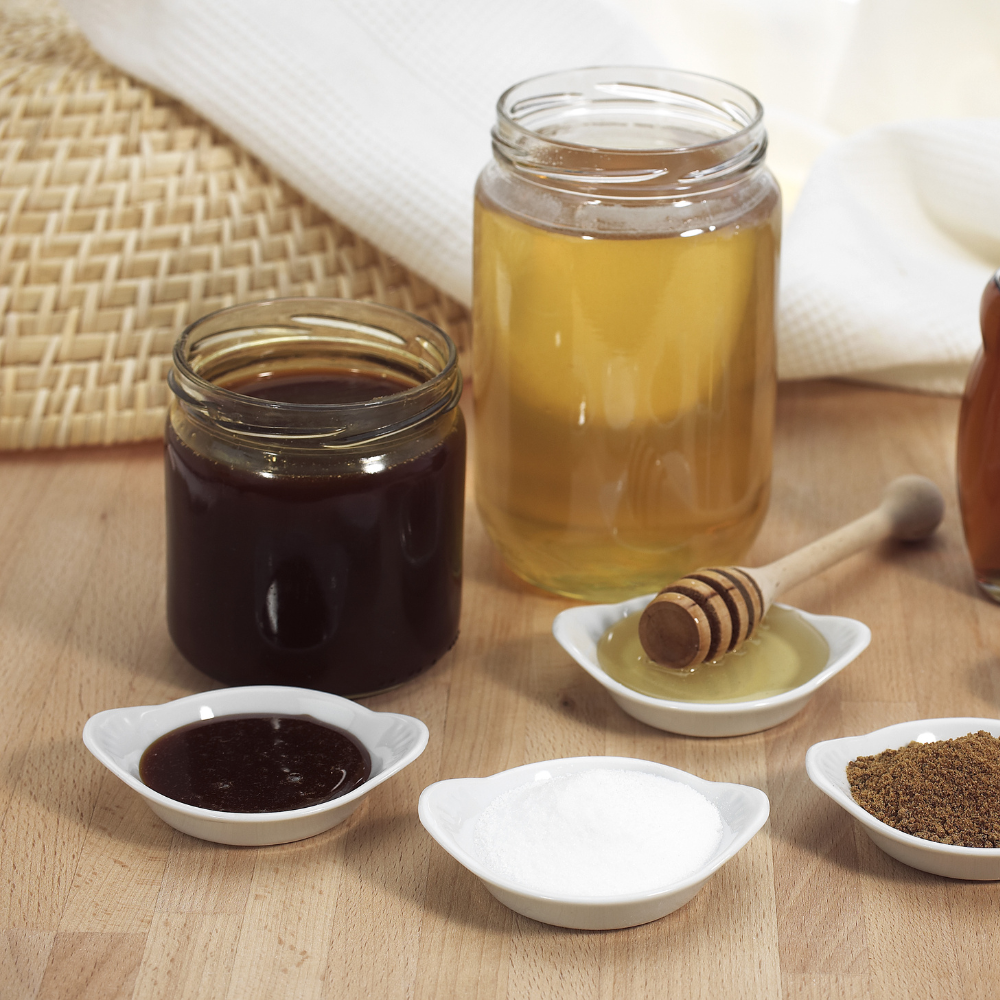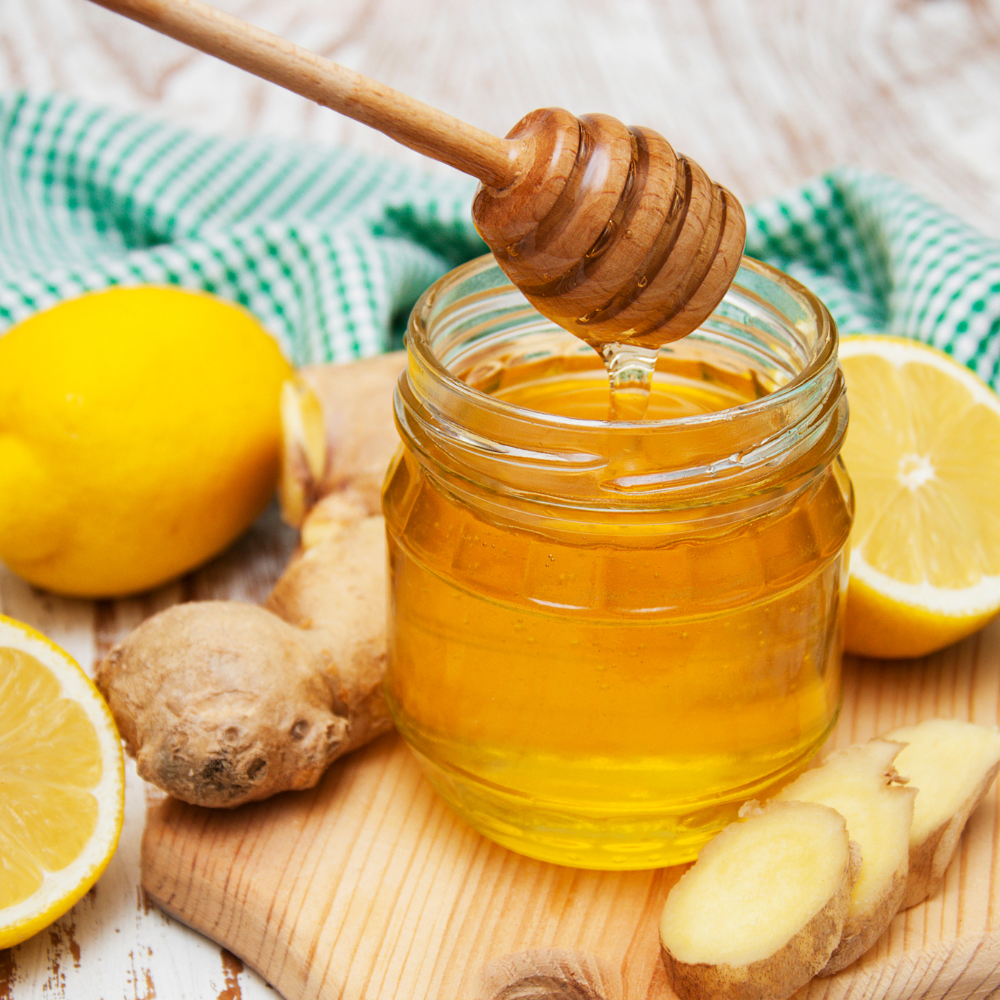If you are someone who loves going grocery shopping and browsing all the different aisles filled with different products, you must have observed this. It is a really common sight to see honey of different types available there. A few labels that might have caught your attention could be – raw, wild, multifloral, monofloral, combed, creamed, chunk, processed honey, etc.
It is natural to ask how they differ and what benefits one honey type has over the other, right?
Honey is widely classified throughout the world based on its origin, processing system, types of foraging bees, colour, and texture. That’s why there are so many varieties of honey available to us, and it is really difficult to say exactly how many different types of honey there are.
There are more than 25 varieties of honey alone, based on the different flowers, which vary geographically. Similarly, there are ample varieties of honey based on the type of nectar collected by the bees, and so on.
You can see how vast the world of bees and their honey is! Isn't that amazing?
Today, we will uncover basically two different types of honey: monofloral and multifloral honey, and their benefits and nutrition.
However, before that, let's briefly look into the basics of how honey is made.
|
Table of Contents
|
Journey of Honey: From Nectar to Delicious Honey
So, you know that bees make honey, and they are more organised than us! Here’s the proof:
- The Queen Bee commands every action.
- The foraging bees collect nectar, plant sap, honeydew, etc. from plants and flowers.
- The drone bee supervises, and
- The fanning bee maintains the temperature in a beehive.
Now, let’s look at how honey is made.
The foraging bees collect nectar from plants and flowers in their honey sacs and pass it on to house bees in the beehive. During this, some enzymes are added to the nectar. These enzymes convert sugar in nectar into sucrose, fructose, and glucose. The liquid undergoes multiple exchanges between bees, and then it is placed in the cells of the honeycomb.
In a honeycomb, the fanning bees ventilate the hive for the evaporation of water from the honey. Once the water content is less than 20%, the cells are sealed with beeswax for storage and to prevent fermentation in the future.
This mature or ripe honey is then collected from the honeycomb and sold to you after undergoing various screening processes.
Alright, that was honey’s story for you. It's time to learn a little about the broad classification of honey's different types.
Important Varieties of Honey You Must Know About
The two basic types of honey are monofloral, or unifloral, and multifloral. All the other honey types can be segregated into these two types. But, before moving on to discussing what is multifloral and monofloral honey, take a look at the broad classification of honey based on various factors: origin, processing, usability, etc.
|
Broad Classification of Honey |
|
|
Based on Pollen Diversity |
Unifloral (one species of plant) and Multifloral (multiple plant species) |
|
Based on the Type of Nectar |
Blossom (nectar of flower) and Honeydew (secretion of plant-sucking insect) |
|
Based on the Processing System |
Combed, Strained, Chunk, Extracted, and Granulated honey |
|
Based on Usage |
Industrial bakers and table honey |
|
Based on Colour |
Light golden, pale yellow, dark red, brownish-red, etc. |
|
Ayurvedic Classification Based on Bee Type |
Makshika, Bhraamara, Kshaudra, and Paittaka |
Okay! Now, you know honey has numerous types.
The quality of honey depends upon the climate and geographical conditions, the species of bees, and the type of nectar collected by them to make honey.
Man-made bee farms are also producing honey these days, which has brought a new type: man-made honey. As long as the honey is produced by bees, it doesn't matter if the honeycomb structure is natural or artificial.
It’s time to learn about the honey of different types: monofloral and multifloral.
What is Monofloral Honey aka Unifloral Honey?

Monofloral honey is honey made from nectar collected from a single variety of plants. The foraging bees forage largely on one type of plant, collect the nectar, and make honey out of it.
Generally, any honey that has more than 45% of the nectar indicated from one plant source is named after it as; monofloral (plant name) honey. A few common examples are Acacia, Mustard, Taramira, Indian Berry, Onion Flower Monofloral Honey, and so on.
Features of Monofloral Honey

- Sourced from one type of plant (the pollen content of one plant is more than 45%).
- The colour depends on the type of flower, plant, and bee.
- More prized than other honey types.

Benefits of Monofloral or Unifloral Honey
- Rich in minerals, a few vitamins, and polyphenols.
- Unifloral honey brings along the benefits of the plant species it is made from, making it more nutritive.
- Unifloral honey has the distinct flavour of the plant or the flower.
- More commonly used in baking and other recipes for their unique flavours.
Let’s learn about multifloral honey now.
What is Multifloral Honey?

As the name suggests, multifloral honey is honey that is made from different types of nectar. The foraging bees collect nectar and sap from different plants and flowers and use them to make honey.
Features of Multifloral Honey
- The pollen content of different plants in multifloral honey remains below 45% when compared to the total pollen content.
- The flavour of multifloral honey is mixed and not distinct.
- The colour has variation and is mostly dark or light in shade.
- Cheaper than monofloral honey.
- Easily available.
Benefits of Multifloral Honey
- Multifloral honey has nutrients from different types of plants.
- It is rich in polyphenols, minerals, and a few vitamins.
- It has the health properties of regular honey, like boosting immunity and being good for the skin, gut, and certain health conditions.
Alright, that was a glimpse of multifloral and monofloral honey types: introduction, their features, and their benefits. Let’s see what differentiates both of them in terms of nutrients.
Different Nutrients Present in Monofloral and Multifloral Honey

Monofloral honey has more glucose, protein, calcium, iron, magnesium, phosphorus, potassium, sodium, and zinc than Multifloral honey. The chart below indicates the amounts of various nutrients present in both types of honey.
|
Nutrients Present in Monofloral and Multifloral Honey |
||
|
Nutrients |
Monofloral/ Unifloral Honey |
Multifloral Honey |
|
Fructose(mg/ml) |
62 |
68 |
|
Glucose(mg/ml) |
51.47 |
49.62 |
|
Total protein content (mg/g) |
3.9 |
3.1 |
|
Mineral content (mg/ml) |
27.14 |
9.51 |
|
Calcium (mg) |
10.64 |
3.06 |
|
Iron (mg) |
0.66 |
0.12 |
|
Magnesium (mg) |
1.38 |
0.60 |
|
Phosphorous (mg) |
1.22 |
0.11 |
|
Potassium (mg) |
10.69 |
1.30 |
|
Sodium (mg) |
3.35 |
3.28 |
|
Zinc (mg) |
0.16 |
0.10 |
Source: A study titled: Analysis of unifloral and multifloral honey for physic-chemical properties in southern Karnataka, India.
Knowing the nutrients present in honey will help you identify the right type of honey. You can easily pick honey based on it and reap several health benefits from it.
FAQs: What Are The Different Types Of Honey And Their Benefits?
Which honey is costlier?
Generally, monofloral honey is costlier than regular honey. It is made from the nectar of a single type of plant species, making it hard to produce and harvest in large quantities.
Which type of honey is healthier?
All types of raw, wild, ripe, and unprocessed honey are healthier than processed honey. Honey is rich in antioxidants, polyphenols, and minerals. The quantities of the nutrients vary in different types of honey due to the differences in their sources (nectar variety and quality). For instance, monofloral honey is considered more nutritious than multifloral honey.
Which honey is original?
To know about the purity of honey, you can do a simple test. Take a drop of honey and place it on a paper napkin. If there is adulteration, the honey will be absorbed. If it’s pure, it will stay as it is on the paper napkin.
Which Honey Is the Best Honey?
The best honey for you depends on your taste preferences and intended use. Some may prefer the lightness of acacia honey, while others favor the richness of buckwheat honey.
What are some Benefits of honey?
Honey offers potential health benefits, such as being a natural source of antioxidants, a soothing remedy for sore throats, and a versatile sweetener.
What Kind of Honey Should I Buy?
Factors to consider include your taste preferences, intended use (cooking or sweetening), and the honey's source and production methods.
What influences the flavour of honey, and can you describe different honey flavours?
Honey Flavour: The flavor of honey is determined by the nectar source from which the bees collect. Different honey varieties can range from mild and floral to bold and robust in flavor.
What factors determine the quality of honey?
The quality of honey depends on various factors, including its source, processing methods, purity, and absence of additives.
Conclusion
It’s time to wrap up!
We hope that you have a better understanding of honey’s different types: monofloral and multifloral. Both types have their own distinct features and nutrient profiles. They are both healthy in their respective ways.
Remember, the best honey is the one that’s unadulterated, fully ripe (moisture less than 20%), raw, unprocessed, and natural.
Not sure where to buy unadulterated and pure honey? You can choose the best-suited honey for your needs from the Two Brothers Organic Farms honey collection. Check out the exclusive collection of raw, wild, monofloral honey: Acacia, Mustard, Taramira, Indian Berry, and Onion Flower Monofloral Honey and raw, wild, multifloral honey. Buy them now!
Also read :











